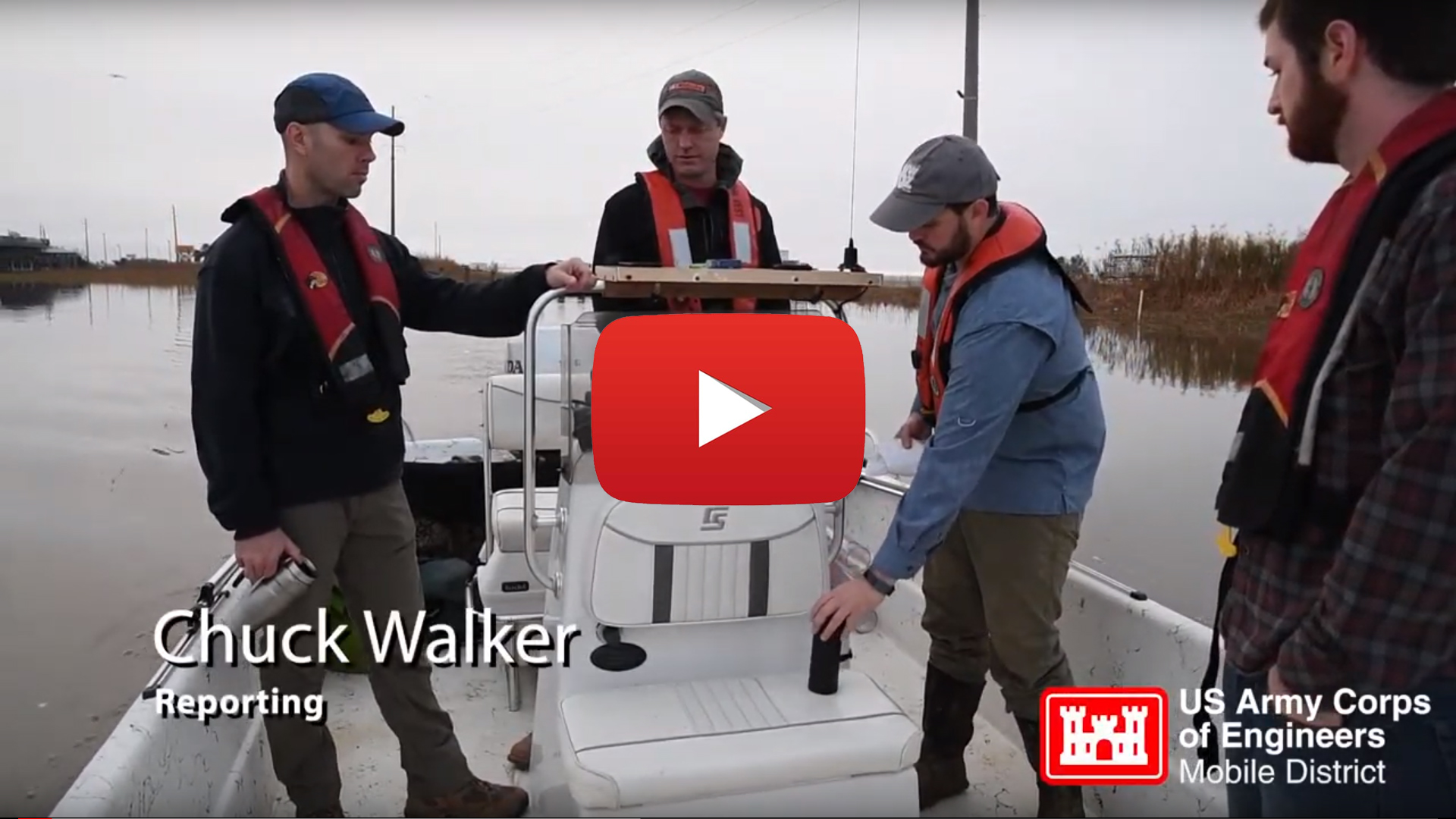MOBILE, Ala. – The U.S. Army Corps of Engineers Engineer Research and Development Center teamed up with USACE Mobile District’s Regional Sediment Management Team, kicking off a sediment study on Jan. 13, 2020, at North Blakeley Island in Mobile, Alabama.
The study will determine if sediment currently stored on North Blakeley Island could be used to strengthen the marshes around the island.
“The effort that we led into this past week with our ERDC Team was for them to come and we were pulling marsh sediment profiles to look at the current health of the systems and its history,” said Don Mroczko, Mobile District Biologist. “Are those wetlands and are those marshes accreting material naturally, are they strong and are they getting enough sediment. Because if not, they might benefit by receiving some sediment from our disposal areas.”
The Regional Sediment Management Program is a National USACE Program looking for unique ways for dredge material placement. Mobile District was chosen for the study.
Robert Allen, coastal engineer, USACE Mobile District, said if the study proves successful, it could be duplicated throughout the country, resulting in cost benefits to the Corps.
“We’re using our site, Blakeley Island, as a test pilot project to evaluate thin layer placement of dredge material over wetlands,” Allen said.
If it is decided, after evaluation by ERDC, that the sites tested could benefit from the placement of sediment into the marshes it could also benefit other districts who have similar sediment storage issues.
“So, we’re now just at the beginning stages of a long path forward,” Mroczko said. “Ultimately, we think that if this something that could be beneficial, we might utilize it in our districts and other districts.”
Both the Mobile District RSM Team and ERDC said that if the core samples tested prove that those areas would benefit from sediment being added to them, then that process could begin as early as one year from now.
